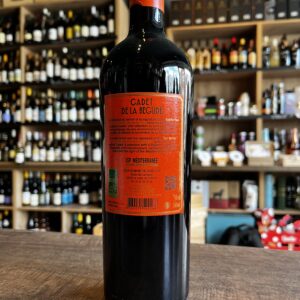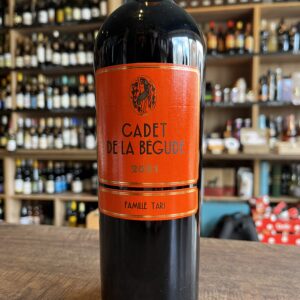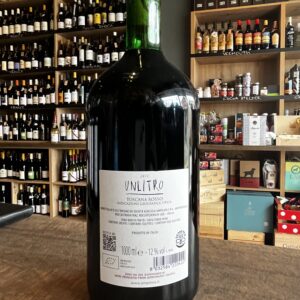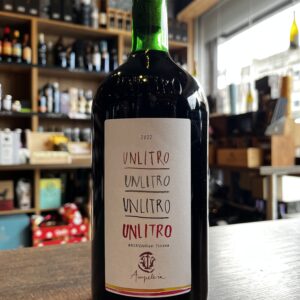Mourvèdre (aka Monastrell) is a full-bodied and rustic wine that originated in Spain. Rumor has it that the seafaring Phoenicians brought it over as early as 500 B.C. Mourvèdre quite often is used as a blending grape in popular wines such as Châteauneuf du Pape. It’s one of the major grapes of the Rhône, along with Grenache and Syrah.
-
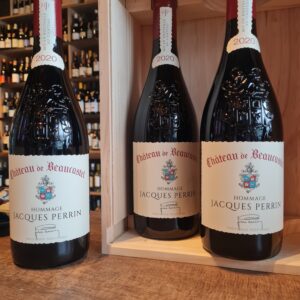 The Perrin family of Châteauneuf-du-Pape are one of the Rhône Valley’s greatest vineyard owners. With over 200 hectares of top level, prime vineyards at their fingertips, they have the terroir and skill required to produce some of the region’s finest wines. The estate traces its history back to a plot of Coudoulet vines bought by Pierre de Beaucastel in 1549. The estate was transferred into the Perrin family in 1909 through marriage, where it remains firmly to this day. Despite being one of the old guards of the region, they are also one of the most progressive estates. They were one of the first converts to organic and biodynamic faming in Châteauneuf-du-Pape, which they adopted in 1950 and 1974 respectively. A legendary Châteauneuf-du-Pape wine, Hommage à Jacques Perrin by Château de Beaucastel is one of the world's greatest wines. It brilliantly embodies the motto of the Perrin family: "A Grand Vin embodies emotion and civilisation, a legend that transcends time." The first vintage of this prestigious wine was produced in 1989. Produced in very limited quantities, the Hommage à Jacques Perrin wine comes from a unique terroir composed of rolled pebbles upon clay-limestone and silt soils in an exceptional vineyard located in the northern part of the Châteauneuf-du-Pape appellation, in the Rhône Valley. Vintage 2020 was relatively mild, the winter was punctuated by an episode of frost which had little impact on the vineyards, even the earliest plots. While the mildness of spring favoured vegetative development, a constant wind kept the soil cool. The hot, sunny summer was marked by both coolness and temperature variations between day and night, ideal conditions for ensuring a high-quality and even ripening of the grapes. Harvested at perfect maturity, the juicy and balanced grapes gave rise to a fine vintage.
The Perrin family of Châteauneuf-du-Pape are one of the Rhône Valley’s greatest vineyard owners. With over 200 hectares of top level, prime vineyards at their fingertips, they have the terroir and skill required to produce some of the region’s finest wines. The estate traces its history back to a plot of Coudoulet vines bought by Pierre de Beaucastel in 1549. The estate was transferred into the Perrin family in 1909 through marriage, where it remains firmly to this day. Despite being one of the old guards of the region, they are also one of the most progressive estates. They were one of the first converts to organic and biodynamic faming in Châteauneuf-du-Pape, which they adopted in 1950 and 1974 respectively. A legendary Châteauneuf-du-Pape wine, Hommage à Jacques Perrin by Château de Beaucastel is one of the world's greatest wines. It brilliantly embodies the motto of the Perrin family: "A Grand Vin embodies emotion and civilisation, a legend that transcends time." The first vintage of this prestigious wine was produced in 1989. Produced in very limited quantities, the Hommage à Jacques Perrin wine comes from a unique terroir composed of rolled pebbles upon clay-limestone and silt soils in an exceptional vineyard located in the northern part of the Châteauneuf-du-Pape appellation, in the Rhône Valley. Vintage 2020 was relatively mild, the winter was punctuated by an episode of frost which had little impact on the vineyards, even the earliest plots. While the mildness of spring favoured vegetative development, a constant wind kept the soil cool. The hot, sunny summer was marked by both coolness and temperature variations between day and night, ideal conditions for ensuring a high-quality and even ripening of the grapes. Harvested at perfect maturity, the juicy and balanced grapes gave rise to a fine vintage. -
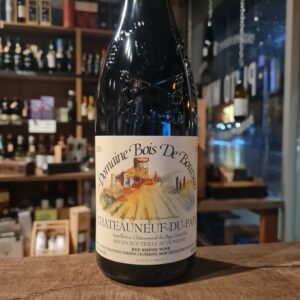 Domaine Bois de Boursan makes exemplary Châteauneuf-du-Pape in the Southern Rhône. This family-run estate was started by the Versino family in 1955, who moved across from Piedmont in Italy. It is now in the hands of Jean-Paul, the third generation at the helm. He takes great pride in continuing to make traditionally-styled reds with the belief that vinifying with stems and ageing the wine for extended periods in large oak foudres gives his wine its unique character. There is nothing flashy or opulent here, just wines with great character. In total, Jean-Paul has 10 hectares spread across 27 different parcels in Châteauneuf-du-Pape, with its changing soil types and vines up to 50 years old.
Domaine Bois de Boursan makes exemplary Châteauneuf-du-Pape in the Southern Rhône. This family-run estate was started by the Versino family in 1955, who moved across from Piedmont in Italy. It is now in the hands of Jean-Paul, the third generation at the helm. He takes great pride in continuing to make traditionally-styled reds with the belief that vinifying with stems and ageing the wine for extended periods in large oak foudres gives his wine its unique character. There is nothing flashy or opulent here, just wines with great character. In total, Jean-Paul has 10 hectares spread across 27 different parcels in Châteauneuf-du-Pape, with its changing soil types and vines up to 50 years old. -
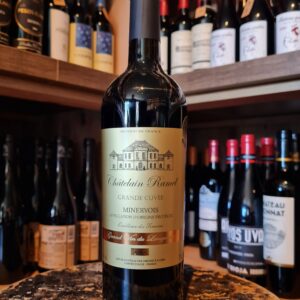 Dominated by Carignan, this is a Minervois which will wow the senses and really impress with its value for money. The fruit for the Ramel Grand Cuvee were sourced from the Domaine de la Baquiere Estate, within the heart of the Languedoc Wine Region. From 23 hectares of vineyard on the slopes of the Montagne Noire where the Ramel-Mazard family winemaking dates back to 1726, forming traditional methods of production, with the fruit harvested by hand and each grape variety vinified separately in stainless steel. This is a medium/full bodied with bright ruby edge. Interesting and attractive nose, sweet blackberry, plum notes with a smoky, meaty complexion. Cherry notes too. Medium weight palate with sweet blackberry fruit, mocha and cherry tones. Tannins are grippy but well balanced and the 14% alcohol well integrated. Would suit Duck very well, or slow cooked meats stew style dishes.
Dominated by Carignan, this is a Minervois which will wow the senses and really impress with its value for money. The fruit for the Ramel Grand Cuvee were sourced from the Domaine de la Baquiere Estate, within the heart of the Languedoc Wine Region. From 23 hectares of vineyard on the slopes of the Montagne Noire where the Ramel-Mazard family winemaking dates back to 1726, forming traditional methods of production, with the fruit harvested by hand and each grape variety vinified separately in stainless steel. This is a medium/full bodied with bright ruby edge. Interesting and attractive nose, sweet blackberry, plum notes with a smoky, meaty complexion. Cherry notes too. Medium weight palate with sweet blackberry fruit, mocha and cherry tones. Tannins are grippy but well balanced and the 14% alcohol well integrated. Would suit Duck very well, or slow cooked meats stew style dishes. -
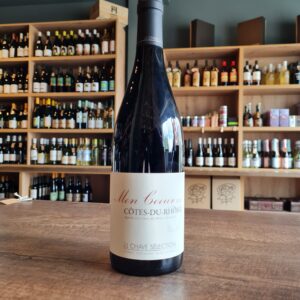 Domaine Jean-Louis Chave is one of the finest producers in the Northern Rhone. 16 generations of wine making has led to mastery of their art. This astonishing experience and expertise is pervasive in this wine. This deliciously ripe Syrah/Grenache blend has a wonderful core of dark, berry fruit supported by a framework of ripe tannin with cooling, granitic notes and a sleek, sophisticated texture. The sublime quality of the wines at this Domaine have meant that there has always been a long queue of Wine Merchants desperate for a glimpse of the Chave cellars. Gerard's son, Jean-Louis makes the wine at the Estate now and his ideal is to produce wine that is as pure an expression of the grape and terroir as possible. He achieves this by only vinifying the healthiest grapes produced from low yielding vines, intervening as little as possible while making the wine and bottling without filtration. His wines are some of the Rhône’s most complete and sophisticated examples. Jean Louis Chaves' selection wines are benchmarks of the Rhone, packed with regional character, that are made from a mixture of declassified Domaine fruit and grapes that are grown by Jean-Louis in conjunction with other vignobles. After tasting this gorgeous wine, I understood the name "Mon Coeur".
Domaine Jean-Louis Chave is one of the finest producers in the Northern Rhone. 16 generations of wine making has led to mastery of their art. This astonishing experience and expertise is pervasive in this wine. This deliciously ripe Syrah/Grenache blend has a wonderful core of dark, berry fruit supported by a framework of ripe tannin with cooling, granitic notes and a sleek, sophisticated texture. The sublime quality of the wines at this Domaine have meant that there has always been a long queue of Wine Merchants desperate for a glimpse of the Chave cellars. Gerard's son, Jean-Louis makes the wine at the Estate now and his ideal is to produce wine that is as pure an expression of the grape and terroir as possible. He achieves this by only vinifying the healthiest grapes produced from low yielding vines, intervening as little as possible while making the wine and bottling without filtration. His wines are some of the Rhône’s most complete and sophisticated examples. Jean Louis Chaves' selection wines are benchmarks of the Rhone, packed with regional character, that are made from a mixture of declassified Domaine fruit and grapes that are grown by Jean-Louis in conjunction with other vignobles. After tasting this gorgeous wine, I understood the name "Mon Coeur". -
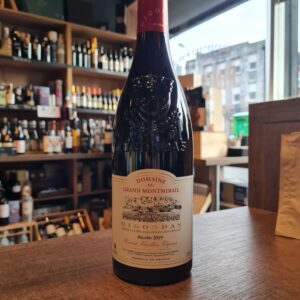 Domaine du Grand Montmirail Gigondas lies in the foothills of a limestone escarpment in a remote part of Gigondas. A blend of Grenache, Syrah and Mourvedre, this wine has real depth of flavour with concentrated black fruits balanced by fresh acidity and a rich warm finish. In Gigondas, cultivating grapes to make wine and olives to make oil stretches back to ancient times. As long ago as the 1st century, Julius Caesar established a colony of veterans on this site. One is said to have been so jovial that he was nicknamed Jucundus, 'the joyful', and his village became known as Jocundatis, which later became Gigondas. Domain du Grand Montmirail covers more than 35 Ha, planted exclusively on the hillsides and terraces located south / south-east side of the Dentelles de Montmirail, forming a superb amphitheater dedicated to the vine and the wine. The altitude of the vineyard varies between 300 and 350 meters and enjoys natural protection against the wind dominating the mistral. The vineyard is composed of Grenache, Syrah and Mourvèdre parcels, aged between 15 and 65 years. The harvest begins with Syrah, the quickest grape to ripen, and then the Grenache in the highest spots. The Mourvèdre is the slowest ripening and usually the last grape to be harvested. The entire harvest is picked by hand, and yields are never more than 35 hl/ha. Among the old vines on the terraces, they generally fall to a maximum of 30 hl/ha. The recently picked grapes are transported quickly to the winery situated off to the side of the vineyards. Pair it with Beef, Casserole, Lamb, Mushrooms
Domaine du Grand Montmirail Gigondas lies in the foothills of a limestone escarpment in a remote part of Gigondas. A blend of Grenache, Syrah and Mourvedre, this wine has real depth of flavour with concentrated black fruits balanced by fresh acidity and a rich warm finish. In Gigondas, cultivating grapes to make wine and olives to make oil stretches back to ancient times. As long ago as the 1st century, Julius Caesar established a colony of veterans on this site. One is said to have been so jovial that he was nicknamed Jucundus, 'the joyful', and his village became known as Jocundatis, which later became Gigondas. Domain du Grand Montmirail covers more than 35 Ha, planted exclusively on the hillsides and terraces located south / south-east side of the Dentelles de Montmirail, forming a superb amphitheater dedicated to the vine and the wine. The altitude of the vineyard varies between 300 and 350 meters and enjoys natural protection against the wind dominating the mistral. The vineyard is composed of Grenache, Syrah and Mourvèdre parcels, aged between 15 and 65 years. The harvest begins with Syrah, the quickest grape to ripen, and then the Grenache in the highest spots. The Mourvèdre is the slowest ripening and usually the last grape to be harvested. The entire harvest is picked by hand, and yields are never more than 35 hl/ha. Among the old vines on the terraces, they generally fall to a maximum of 30 hl/ha. The recently picked grapes are transported quickly to the winery situated off to the side of the vineyards. Pair it with Beef, Casserole, Lamb, Mushrooms -
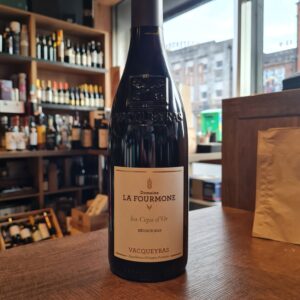 Domaine la Fourmone is a multi-generational domaine and is currently run by sister, Florentine and brother, Albin Combe. The property dates back to the mid-1700’s when it originally producing wheat. Wine began to be grown in the last 19th century and thent became the crop after Julien Combe purchased the property in 1910. The domaine cultivates 41 ha (104 acres) of vineyards of which, 20ha are in Vacqueyras, 10ha are in Gigondas and 7ha of Côtes-du-Rhône and IGP and 4ha of vines on the southern edge of the Dentelles hills that reside in the Ventoux appellation. “Les Ceps d’Or” comes from a blend of mainly Grenache and Mourvèdre. It expresses the imprint of the 50 years of our goblet-pruned vines. The berries are delicately harvested on the northern and eastern limits of the Vacqueyras appellation. The plots come from two islands located on the plateau of the appellation at the foothills of the Dentelles de Montmirail, a massif well known for its geological richness. The first islet is located in the Piedmont de Beauregard region. The soil is made up of dark beige marly silts, cut by broken slabs of Miocene molasses at a depth of one meter. This terroir requires a lot of effort from the vines to slide their rootlets into the cracks and deploy meters of roots. This effort gives the wine a singular complexity and aromatic richness. The second islet is located at the northern limit of the Cône de la Font des Papes terroir. A surface of light beige clay-sandy silt with small limestone fragments with a well-developed root profile up to two meters deep. The materials from this terroir have all the criteria favorable to the vine: freshness and good water reserve.
Domaine la Fourmone is a multi-generational domaine and is currently run by sister, Florentine and brother, Albin Combe. The property dates back to the mid-1700’s when it originally producing wheat. Wine began to be grown in the last 19th century and thent became the crop after Julien Combe purchased the property in 1910. The domaine cultivates 41 ha (104 acres) of vineyards of which, 20ha are in Vacqueyras, 10ha are in Gigondas and 7ha of Côtes-du-Rhône and IGP and 4ha of vines on the southern edge of the Dentelles hills that reside in the Ventoux appellation. “Les Ceps d’Or” comes from a blend of mainly Grenache and Mourvèdre. It expresses the imprint of the 50 years of our goblet-pruned vines. The berries are delicately harvested on the northern and eastern limits of the Vacqueyras appellation. The plots come from two islands located on the plateau of the appellation at the foothills of the Dentelles de Montmirail, a massif well known for its geological richness. The first islet is located in the Piedmont de Beauregard region. The soil is made up of dark beige marly silts, cut by broken slabs of Miocene molasses at a depth of one meter. This terroir requires a lot of effort from the vines to slide their rootlets into the cracks and deploy meters of roots. This effort gives the wine a singular complexity and aromatic richness. The second islet is located at the northern limit of the Cône de la Font des Papes terroir. A surface of light beige clay-sandy silt with small limestone fragments with a well-developed root profile up to two meters deep. The materials from this terroir have all the criteria favorable to the vine: freshness and good water reserve. -
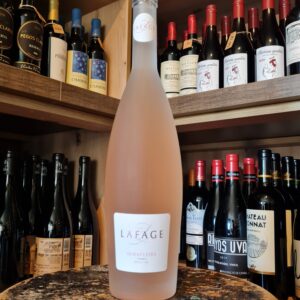 Fantastic Rosé! This organic beauty is just about as good as Rosé can get… beautiful bouquet of roses, strawberry and white peach. The palate is round, polished, silky and wonderfully balanced between fruity generosity and refreshing, minerally more-ishness. Grab some of this wine for summer while you can. It will sell out! It is another beauty that is clean, pure, has textured and elegant on the palate, with gorgeous purity, it’s a rocking rosé that does everything right. Its freshness and good acidity makes it the perfect companion for snacks and fresh dishes, fruit salads, grilled white fish without sauces, vegetable salads and the legendary pasta salads. In short, a wine to drink and taste at all hours.
Fantastic Rosé! This organic beauty is just about as good as Rosé can get… beautiful bouquet of roses, strawberry and white peach. The palate is round, polished, silky and wonderfully balanced between fruity generosity and refreshing, minerally more-ishness. Grab some of this wine for summer while you can. It will sell out! It is another beauty that is clean, pure, has textured and elegant on the palate, with gorgeous purity, it’s a rocking rosé that does everything right. Its freshness and good acidity makes it the perfect companion for snacks and fresh dishes, fruit salads, grilled white fish without sauces, vegetable salads and the legendary pasta salads. In short, a wine to drink and taste at all hours. -
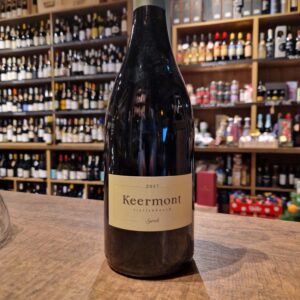 Keermont Vineyards is a specialist wine estate set in the naturally-formed amphitheatre between the Helderberg and Stellenbosch Mountain ranges. All grapes used in producing our wines are grown on Keermont Vineyards. Most of the vineyard parcels grow on deep red clay rich soil derived from sandstone and granite and are surrounded by indigenous vegetation. They lie between 250 and 400 metres above sea level at the top of the valley, and have a variety of aspects from North East to West facing. In 2001, the Wraith family moved to the Western Cape from Gauteng and in 2003 bought two adjacent farms which today make up Keermont Vineyards. Keermont Syrah is a blend of three different Syrah vineyard sites growing on Keermont Vineyards: Steepside Syrah: Growing on a North facing slope in deep, red clay-rich soils; this vineyard generally produces powerful full-bodied wines with rich, spicy flavours. Topside Syrah: An unirrigated west facing vineyard planted at 400m above sea level on rocky sandstone-based soil. Topside Syrah is usually a more aromatic wine with good structure and natural acid. Sweetwater Syrah: Situated in a rocky valley below the Fleurfontein spring, this is the coolest of the three Syrah sites and ripens the latest. Sweetwater Syrah is normally lighter and elegant in style with a herbal aroma. Only produced 12 665 bottles and 145 magnums. Maybe one of these will be yours to enjoy!
Keermont Vineyards is a specialist wine estate set in the naturally-formed amphitheatre between the Helderberg and Stellenbosch Mountain ranges. All grapes used in producing our wines are grown on Keermont Vineyards. Most of the vineyard parcels grow on deep red clay rich soil derived from sandstone and granite and are surrounded by indigenous vegetation. They lie between 250 and 400 metres above sea level at the top of the valley, and have a variety of aspects from North East to West facing. In 2001, the Wraith family moved to the Western Cape from Gauteng and in 2003 bought two adjacent farms which today make up Keermont Vineyards. Keermont Syrah is a blend of three different Syrah vineyard sites growing on Keermont Vineyards: Steepside Syrah: Growing on a North facing slope in deep, red clay-rich soils; this vineyard generally produces powerful full-bodied wines with rich, spicy flavours. Topside Syrah: An unirrigated west facing vineyard planted at 400m above sea level on rocky sandstone-based soil. Topside Syrah is usually a more aromatic wine with good structure and natural acid. Sweetwater Syrah: Situated in a rocky valley below the Fleurfontein spring, this is the coolest of the three Syrah sites and ripens the latest. Sweetwater Syrah is normally lighter and elegant in style with a herbal aroma. Only produced 12 665 bottles and 145 magnums. Maybe one of these will be yours to enjoy! -
Out of stock
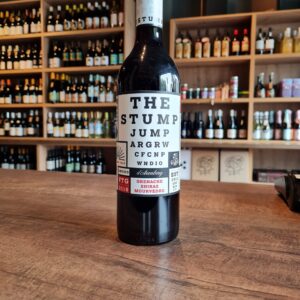 All three varieties play an important role - the Shiraz offers dark plum fruits, mulberries and licorice with plenty of concentration, depth and velvety tannin. The Grenache adds a lovely lusciousness to the wine with raspberry, blueberry and floral notes. Finally, the Mourvédre provides lovely red fruits with a hint of dried herb and importantly, a fine chalky tannin that carries all these characters to a long and wonderfully moreish finish.The fruit weight and silkyness means this wine can be enjoyed now, but it will keep developing over time. This wine screams value, recommended with hard cheeses and red meats.
All three varieties play an important role - the Shiraz offers dark plum fruits, mulberries and licorice with plenty of concentration, depth and velvety tannin. The Grenache adds a lovely lusciousness to the wine with raspberry, blueberry and floral notes. Finally, the Mourvédre provides lovely red fruits with a hint of dried herb and importantly, a fine chalky tannin that carries all these characters to a long and wonderfully moreish finish.The fruit weight and silkyness means this wine can be enjoyed now, but it will keep developing over time. This wine screams value, recommended with hard cheeses and red meats.


